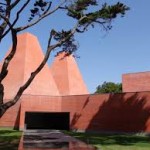Cascais is a cosmopolitan, coastal town 30 km’s west of Lisbon and the final stop on the popular train journey along the Lisbon coast. A former fishing village, it became famous as a resort for Portugal’s Royal Family in the late 19th and early 20th centuries. Today, it has a population of approx 35,000 residents and is a popular holiday spot for both Portuguese and foreign tourists. Although the beaches are small and can become crowded in high season, it compensates with wonderful shopping opportunities as well as great bars and restaurants, museums, fairs and markets. Images of Cascais can be viewed here.
Cascais is also a great place for cultural events and exhibitions and a packed programme of activities can be picked up locally.
Paula Rego
Paula Rego (1935-2022) was one of Portugal’s most famous daughters. She was born in Lisbon, into a traditional culture of storytelling. These stories later became her artistic inspiration. A gallery, Casa das Histórias Paula Rego, opened in her honour in Cascais in 2009. It houses a complete set of every print she has made as well as a number of her most celebrated paintings and drawings. Art, she said then, is ‘disgusting and to be avoided’. What she is really interested in is ‘the beautiful grotesque’. Read the interview in full, here. A transcript of another, longer interview with the BBC’s John Tusa, can be accessed here.
Cascais is a great place to start a seaside walk – just 3kms to the west is Boca do Inferno (the mouth of hell) which is scarily exciting when the tide’s high.
The wild and wonderful Praia do Guincho is just a short 9 km away.
Eastwards takes you past bars, a sea pool and exercise points, towards Estoril.
Close by is Cascais shopping, a large, popular, out-of-town shopping centre. Free buses ferry shoppers there and back from Estoril and Cascais stations.
Buses 962 and 462 also run to/from Carcavelos station and Cascais shopping.
A delightful short movie about life on the Lisbon Coast can be viewed here. It was filmed between 1924-27.

